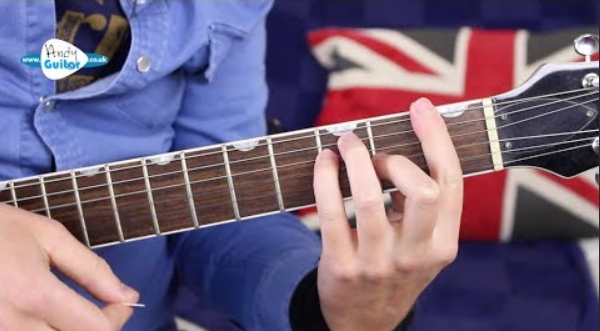Master 5 Easy Basic Guitar Strumming Patterns for Beginners

When you’re just starting with the guitar, one of the key elements that bring your playing to life is strumming. While playing the right chords is crucial, the rhythm or strumming pattern you use can completely change how a song sounds. Mastering basic strumming patterns is a great way to build confidence, develop rhythm, and bring energy to your playing.
In this blog, we’ll dive into a few essential strumming patterns that every beginner should practice. Whether you’re into folk, pop, or rock, these patterns will give you the foundation you need to strum your way through almost any song.
What Is Strumming and Why Is It Important?
Strumming refers to the act of sweeping your pick (or fingers) across the strings to produce sound. The pattern or rhythm you use to strum affects the song’s overall feel—whether it’s upbeat, mellow, or somewhere in between.
For beginners, strumming is important because it trains your hand to move in time with the beat of the song. It also helps develop coordination between your fretting hand (the one that forms the chords) and your strumming hand.
Key Elements of Strumming
Before diving into specific patterns, let’s touch on a few important aspects of strumming:
1. Downstrokes and Upstrokes:
- Downstroke (D): Strumming from the thickest string (lowest pitch) to the thinnest string (highest pitch).
- Upstroke (U): Strumming from the thinnest string to the thickest.
2. Keeping Time:
- Most strumming patterns follow a time signature (like 4/4, which means four beats per measure). You should practice with a metronome or tap your foot to stay in time.
3. Consistency:
- Strumming should be smooth and controlled. Avoid jerky movements or hitting the strings too hard.
5 Basic Strumming Patterns for Beginners
1. The Four-Count Downstroke Strum
This is the simplest pattern and a great starting point for beginners. It’s just four downstrokes, one for each beat of the measure.
Pattern: D D D D
- Play one downstroke per beat (1, 2, 3, 4).
- This pattern works well for slower songs or for practicing chord changes.
2. Down-Up Strum (D U D U)
The down-up strumming pattern adds a bit more rhythm and is used in countless songs across different genres.
Pattern: D U D U D U D U
- Strum down on the numbered beats (1, 2, 3, 4) and up on the “&” (1 &, 2 &, etc.).
- Keep your strumming hand moving in a continuous motion, even when you’re not hitting the strings for every upstroke.
3. The Down-Down-Up Strum
This pattern is a bit more dynamic and is great for songs with a slight bounce or upbeat feel.
Pattern: D D U D U
- Strum down on beats 1 and 2, then strum down-up on beats 3 and 4.
- Focus on creating a smooth transition from the downstrokes to the upstroke.
4. The Down-Up Miss Up Strum (D U – U)
This pattern introduces a slight pause, or a “miss,” which gives the strum a syncopated feel and adds a nice groove to your playing.
Pattern: D U – U
- Strum down on beat 1, up on the “&” of beat 2, miss beat 3 (but keep your hand moving), and strum up on the “&” of beat 4.
- The key here is keeping the hand moving consistently, even during the miss.
5. The Calypso Strum (D D U U D U)
This is a popular strumming pattern for songs with a relaxed, island-like feel (think songs like “Brown Eyed Girl”).
Pattern: D D U U D U
- Strum down on beats 1 and 2, up on beats 3 and 4, and finish with a down-up on the “&” of beats 4.
- The pattern sounds more complex, but with practice, it flows smoothly and is great for many popular songs.
Tips for Practicing Strumming Patterns
- Start Slow: When learning a new pattern, it’s important to start slowly to get the feel of the rhythm. As you become more comfortable, you can gradually increase your speed.
- Use a Metronome: Practicing with a metronome is one of the best ways to build your sense of timing. Set it to a slow tempo (e.g., 60 beats per minute) and gradually increase it as you improve.
- Chord Progressions: Once you’ve got the hang of a strumming pattern, try applying it to a simple chord progression, such as G – C – D or A – D – E. This will help you combine strumming with chord changes, a key skill for playing songs.
- Stay Relaxed: Tension in your strumming hand or wrist can lead to choppy playing. Keep your wrist loose and let it flow naturally over the strings.
- Practice Daily: Strumming is one of those skills that improve with repetition. Try to set aside a few minutes each day to practice different patterns.
Final Thoughts
Mastering basic strumming patterns is essential for any beginner guitarist. Not only does it help improve your sense of rhythm, but it also adds expression to your playing. Once you’ve nailed these foundational patterns, you can experiment with more complex rhythms, styles, and techniques.
Keep in mind that the most important thing is to have fun while learning. Each pattern you practice is a stepping stone toward playing your favorite songs with confidence and style. So, grab your guitar, get comfortable with these patterns, and let the music flow!
Interested in taking your guitar skills to the next level? Click the below and book a free lesson with us! We’re committed to helping you express yourself freely on the guitar without endless scales and theory. Happy playing!
Author: Daniel Powers Jr, the founder of Real Brave™, serves as the chief inspiration to thousands of students in the Real Brave music instruction program. He’s also the visionary behind PracticePad™, an online platform for live one-on-one online music lessons, lesson tracking, and scheduling. Beyond his entrepreneurial pursuits, Daniel leads a non-profit organization that provides formerly homeless children with access to music education, making a profound impact on their lives. His unwavering dedication to music, innovation, and education continues to inspire individuals to reach their fullest potential while creating positive change in communities. Follow Real Brave on all the socials:
youtube.com/@realbraveinc
twitter.com/realbraveinc
https://www.tiktok.com/@realbraveinc
instagram.com/realbraveaudio
facebook.com/realbraveinc






